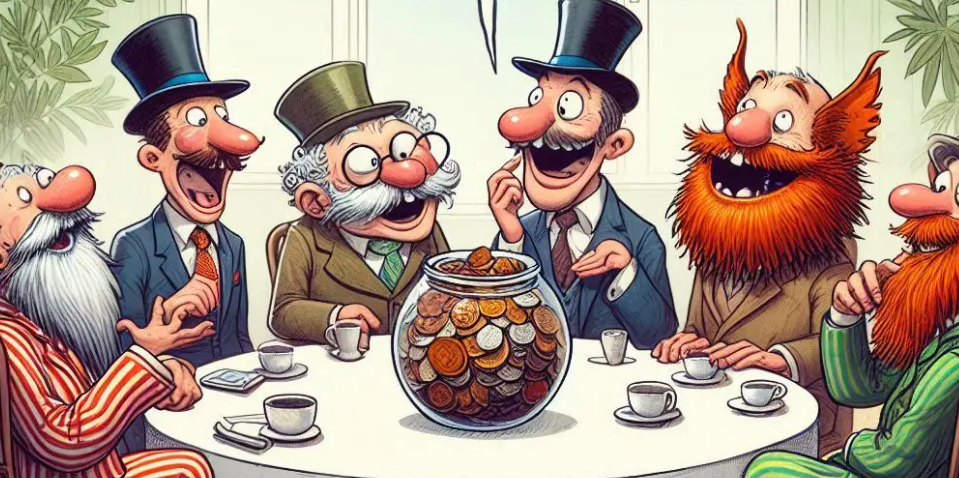Communal Violence is Instigated by Religious Fanatics, Initiated by Anti-Social Elements, Supported by Political Activists, Financed by Vested Interests Comment
Communal violence has become one of
the major threats to peace, harmony, and unity in modern society. It often
results in the loss of innocent lives, destruction of property, and
long-lasting hatred between communities. India, being a diverse nation with various
religions, castes, and communities, has unfortunately witnessed many such
incidents in its history. This quote “Communal violence is instigated by
religious fanatics, initiated by anti-social elements, supported by political
activists, and financed by vested interests” is a very accurate observation
of how such violence often begins and spreads.
Let’s break down each part of this
statement to understand how these different groups contribute to communal
violence, and why it continues to be such a serious issue.
1.
Instigated by Religious Fanatics
Religious fanatics are people who
are extremely rigid and intolerant about their own religious beliefs. They
believe that their religion is superior and that others are wrong or even evil.
These individuals are often blinded by hate and are not open to other
viewpoints. They twist religious teachings to justify violence, even though
most religions teach peace, love, and compassion.
These fanatics spread misinformation
and hatred. They use emotional and religious language to stir feelings of fear
or anger among followers. For example, they may say that another religion is
trying to destroy their culture or that their own religion is under threat.
This kind of propaganda can easily provoke large groups of people into anger or
panic.
Examples: We have seen such incidents in various communal riots, such
as the Gujarat riots in 2002 or the Delhi riots in 2020, where rumors and hate
speech played a big role in instigating the masses. Often, religious leaders or
extreme groups use social media and public speeches to light the first spark of
violence.
2.
Initiated by Anti-Social Elements
Once the flame of hatred is lit,
anti-social elements enter the picture. These are people who thrive on chaos
and disorder. They may include criminals, looters, and troublemakers who are
always ready to take advantage of any unstable situation. When communal tension
rises, these people take the first step toward violence throwing stones, burning shops, attacking
people, or spreading panic.
Anti-social elements are not always
motivated by religion or ideology. Many of them are simply looking for
opportunities to steal, damage property, or settle personal scores under the
cover of mob violence. Communal riots give them a chance to act without fear of
immediate punishment because the police and administration are often too
overwhelmed to respond quickly.
Example: During the 1992 Mumbai riots, several reports pointed out
how gangs and criminal elements used the communal clash as a way to expand
their illegal control over certain areas and markets.
3.
Supported by Political Activists
Unfortunately, politics plays a big
role in communal violence. Some political activists support and even encourage
such violence for vote-bank politics. They know that dividing people on the
basis of religion or caste can help them win elections by appealing to one
specific group and turning them against another.
These political players may protect
the people involved in the riots or influence the police not to take action. In
some cases, they may even help organize violent rallies, spread hate speeches,
or allow riots to continue by delaying police or administrative response.
Example: The Babri Masjid demolition in 1992, which led to
widespread violence across the country, was strongly supported by political
groups who used the issue to mobilize support for their parties. The incident
changed Indian politics forever and showed how religion and politics could be
dangerously mixed.
4.
Financed by Vested Interests
Behind all this violence, there are
often hidden forces funding and guiding it. Vested interests are people or groups
who have something to gain from conflict be it
economic, political, or territorial. These could include land mafias, illegal
businesses, foreign intelligence agencies, or even businessmen who want to
destroy a rival's property or market.
These groups supply weapons, money,
food, and shelter to rioters. They may also pay people to join violent mobs.
For them, communal violence is a tool to achieve their personal or business
goals.
Example: In some cases, violence has been linked to real estate
interests, where riots are used to drive certain communities out of a
neighborhood so that land can be taken over cheaply. This dark side of communal
violence often goes unnoticed but plays a major role in its planning and
funding.
The Chain of Communal Violence
The statement beautifully outlines
how communal violence is not a sudden act of emotional outburst but a
well-structured chain reaction:
- First,
religious fanatics poison minds and create fear and hatred.
- Next,
anti-social elements take the first step toward violence.
- Then,
political activists either silently support or directly help the violence
to grow.
- Finally,
vested interests fund and benefit from the destruction.
This chain makes it very hard to
stop communal violence once it begins because each link supports the next.
Impact
of Communal Violence
The impact of such violence is
deeply damaging:
- Loss of Lives and Property: Innocent people, including women and children, are
killed. Shops, homes, and temples or mosques are destroyed.
- Fear and Distrust:
Communities that once lived in peace start fearing and hating each other.
This fear can last for generations.
- Economic Harm:
Areas affected by riots often face a breakdown of trade, businesses close
down, and tourism is affected.
- Political Instability: Trust in the police, courts, and government weakens,
leading to anger and dissatisfaction.
- Social Division:
Riots create deep cracks in society. People stop marrying across
communities, children grow up with fear and hatred, and friendships break.
The
Role of Media and Social Media
The media has a big role in both
controlling and spreading communal violence. While responsible media can help
stop rumors and inform people with facts, irresponsible or biased media can
increase tension by showing one-sided reports. Today, social media has become
even more dangerous. Fake news, photoshopped images, and hate messages can go
viral in seconds and create panic.
Example: WhatsApp rumors have been behind several mob lynchings in
India in recent years. A simple rumor about child kidnapping or cow slaughter
has led to the death of innocent people.
What
Can Be Done?
To stop this dangerous cycle, we
need strong and immediate action at multiple levels:
1.
Strict Law Enforcement
Police must act quickly and without
bias. Those who spread hate, start violence, or fund riots must be arrested and
punished, regardless of their religion or political power.
2.
Educational Awareness
People, especially the youth, must
be educated about the value of unity and tolerance. Schools and colleges should
include lessons on peace, secularism, and conflict resolution.
3.
Responsible Politics
Political parties must be held
accountable for spreading communal hatred. The Election Commission and courts
should take strong action against those using religion to gain votes.
4.
Media Regulation
Media must follow ethical reporting.
Social media platforms must act faster to remove hate content, and users should
be made aware of how to report fake news.
5.
Community Dialogue
Local communities must be encouraged
to talk to each other, organize joint events, and create peace committees that
can stop small disputes from turning into riots.
The statement that “Communal
violence is instigated by religious fanatics, initiated by anti-social
elements, supported by political activists, and financed by vested interests”
reveals the truth behind the curtain. It shows that communal violence is not
just an emotional reaction but a carefully planned and executed crime. It is
time for us as a society to understand this and break this chain.








.jpg)

EmoticonEmoticon